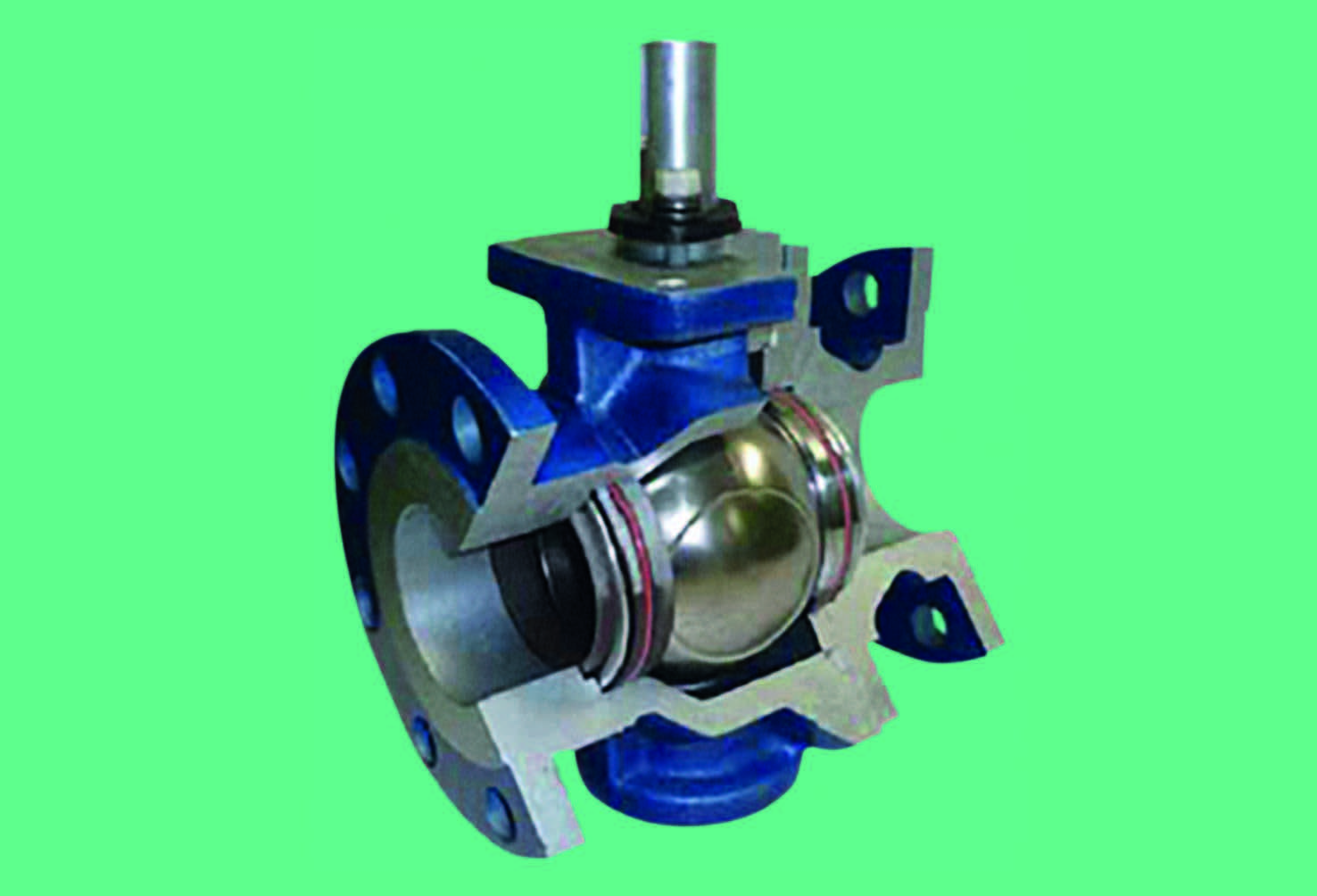High temperature metal-seated ball valves are well suited for a variety of demanding services, such as applications subject to abrasion, erosion, corrosion, where high-temperatures up to 800˚F are present. This Technology Corner will look at the properties of Metal-Seated Ball Valves.
By Bob Donnelly, Contributing Writer
High pressure three piece ball valves made out of forged or bar stock materials are required for applications where, temperatures reach as high as 1,200˚F, there is the potential for media build up, cycling with solids in the line, and there is a use of standard material coatings. These valves can be manufactured to exact specifications and are available in ANSI pressure classes from 150 to 2,500.
Metal Seated Valves Application
The primary applications for metal seated valves include power generation and refining application. More specifically, they are used for: control valve isolation, bottom ash isolation, superheater spray, boiler feed pumps, main steam supply, main boiler drain, as well as coal slurry handling, heavy oil units, hydrogen isolation, coker – isolation, catalyst slurry, and hydrotreating.
General Properties of Valve
Corrosion/Erosion Resistance
The life of the metals used on the valves can be extended with a wide variety of surface coatings that are available for both internal and external components. These coatings include Teflon, Chrome, Electroless Nickel, Zinc Phosphate, Galvanizing, and other options.
Balls & Seats
The balls and seats can be mate-lapped for 100% sealing to ensure absolute shutoff per ANSI classification and are corrosion resistant. Seats are protected from the open and closed position and are available as field replaceable sets. The seat spring, which is assisted by line pressure, provides a constant mechanical force on the ball to maintain a tight seal.
In-Line Reparability
The three piece valve assembly allows for the valve body to be easily removed while the end connections remain in-line. This allows for the valve body to be tested after repair and prior to insertion back in the pipe line.
Body Gaskets
Encapsulated spiral wound body seals guarantee zero leaks to the surrounding area and lowers contact stresses.
Scraper Seat Design
The scraper seat design is ideal for most difficult applications where build-up of damaging fluid deposits may occur on the ball face. Over time, this occurrence to the critical smooth ball surface will cause the ball to become rough and dull thus rendering the valve inoperable. This problem is most common in pulp and paper operations and white, black and green liquor.


High-Tech Metal Seat Design Selections
G Seat-Graphite Sealed Seats
A series of Graphite seal rings behind the metal seat, coupled with a Graphite outer diameter seat seal prevents media from building up behind the seat. The rings also allow for the expansion of the internal valve components in high temperature applications.
P Seat- Spring Loaded
For unidirectional applications the sealing seat is available as a separate seat ring for reparability, or integral with the tailpiece for high temperature applications. The spring seat OD prevents media from building up between the spring and the back of the seat.
O Seat-O-Ring Sealed Seat
A double seal design provides both spring loading and excellent sealing capabilities. There is no area for media build up behind the seat, which prevents the valve from locking up.
R Seat-Replaceable Seat Design
The seat design is an ideal choice for any application that exceeds the requirements for high temperature soft seated ball valves. All valve balls are upgraded to assure a precise spherically finish. If needed, this valve can be considered as a drop-in replacement of the valve seat and can be rebuilt in the field. No special machining is required.
Ball Surface Treatments and Coatings
Choosing the right hard surface technique for ball coating is key to overcoming a wide variety of application problems. These surfaces must resist high temperature wear, galling and corrosion, in addition to maintaining total sealability.
Hard Chrome Plating: Hard chrome plating is a very hard electroplate exceeding Rockwell C-67. Together with its low co-efficient of friction and its self-lubricating properties, hard chrome is an ideal material for any wear surface. It can be used in applications up to 2,000˚F with no ill effects.
Nitriding: Nitriding is a surface treatment technique that significantly increases the hardness and wear resistance of austenitic 300 series stainless steel by thermo-chemical diffusion.
Tungsten Carbide: Tungsten Carbide with a cobalt binder coating applied by HVOF techniques similar to Cr3C2. WC-Co coating applied mainly to 400 series martensitic stainless steel results in a micro-hardness as high as 72d Rc. This coating resists cryogenic temperatures down to -320˚F (-196˚C) and high temperatures up to 1,000˚F (538˚C). WC-Co is a wear resistant and dense coating with chemical resistance to sulphur environments on any Nickel based alloy.
Stellite: Stellite is a cobalt-based satellite coating that provides excellent mechanical wear resistance with good corrosion resistance at temperatures up to 1,000˚F (538˚C).
Final Notes
In summary, the primary features of metal-seated ball valves are: The spring seat design provides freedom for thermal expansion of the ball without any jamming, even at extreme temperatures. This feature has been proven in qualification tests and field operations to be excellent even for the toughest applications in slurry services with solids.
• The 17-4PH internal entry stem provides extra strength and durability in severe services.
• The solid high-sphericity stainless steel ball with a hard chrome plating provides exceptional durability in severs applications while maintaining a smooth, low turbulence flow.
• The non-magnetic cobalt based super alloy maintains strength up to 2,159˚F. The material also maintains good oxidation resistance up to 900˚F and has a unique ability to resist corrosion in very severe environments. It is highly resistant to hydrochloric acid, nitric acid and wet chlorine.
Conclusion
Major valve users with demanding services are moving away from soft seated valves because of short valve life, high torques, and valve failures in their severe processes. These applications range from slurries, abrasion, erosion, solids, and high temperatures. Soft seated valves are also at risk of failure from high velocities and high pressure drops. Many pulp and paper and power industries have adopted full metal-seated ball valves over soft seated valves.

ABOUT THE AUTHOR
Bob Donnelly is Vice President of Business Development for FloTite Valves & Controls. He has over 30 years of process control automation experience.


